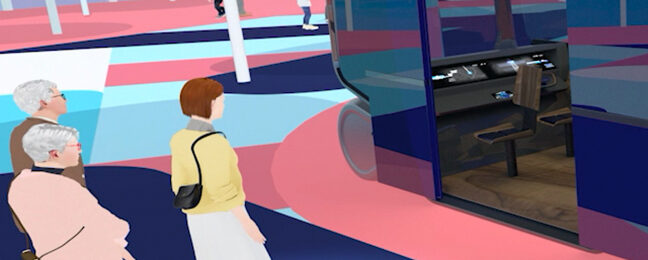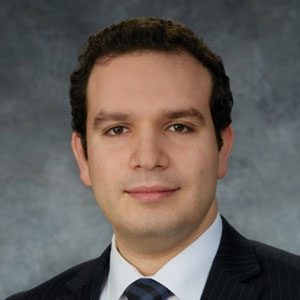Autonomous Congestion

There’s an aspect of autonomous driving that’s rarely discussed: how do autonomous vehicles deal with highly complex traffic situations? As self-driving cars start flooding the streets over the next couple of decades, they’ll be mixed with traditional human-driven cars, trucks, e-bikes, scooters, pedestrians, and public transportation. Unfortunately, the common “solution” to an autonomous vehicle that’s undecided on a course of action – slowing the car to a stop – will lead to instant gridlock.
We’ve been exploring how autonomous cars can manage congestion caused by AI- and human-piloted vehicles, micromobility solutions, and pedestrians. While it’s a very complex problem, we’re making steps to solve it, one use case at a time.
As an example, let’s first look at an autonomous valet: a person summoning a vehicle from a nearby parking spot and having it drive itself to her location. That ability is going to enable a whole range of mobility service options in urban environments. This works great in concept for a single request – say a couple getting a ride home after dinner, or a person calling a car to run an errand. But, what happens to autonomous valets at the end of a concert, sports game, or closing hours at the mall?
We’ve come up with a solution for these situations. By combining building-mounted surveillance video with our AI-powered real-time crowd prediction algorithms, we can pinpoint where people and cars are and forecast where the densest traffic is going to be. Then, we can route vehicles from their parking space to the pickup zone around traffic hot spots. If it looks like a small change in the pickup area could beat the rush, we give the person the option to walk to a different location like a less crowded corner or street. If they’re willing and able to move a bit to meet the car at a different pickup, we can save them some time.
As another example, imagine a crowded Beijing intersection with vehicles of every type headed in every direction. For a self-driving car, traffic-heavy intersections anywhere can be just as complicated to negotiate. We’re solving this problem with a combination of technologies. To be sure we see everything, we’re using satellite positioning and highly accurate maps to precisely determine vehicle location, sensor fusion of both radar and cameras to determine vehicle surroundings, and infrastructure cameras to help augment blind spot detection. We combine this with AI-powered motion tracking and prediction for all vehicles, pedestrians, cyclists, and other motorists. We can then confidently understand the car’s immediate surroundings and where the car is headed. This enables us to plot a cautious but steady path through the gauntlet, negotiating our way through heavy traffic intersections, even when complicated by difficult road geometries or bad visibility conditions like blowing slow or sleeting rain.
This is just the start. If you want to see the next step in new mobility solutions, visit us at CES and sign up for a private tour.

Mohammad Horani leads a team of advanced development engineers that develop future-focused projects in the infotainment and telematics space. Mohammad has worked in the automotive and telecommunications industry for +15 years, having held a variety of roles and responsibilities in Automotive and Telecom industries. Mohammad holds a Bachelor and a Master of Science in Electrical Engineering from the University of Aleppo, and a Master of Engineering in Electrical and Computer Engineering, in Autonomous Robotics Navigation systems, from the University of Detroit Mercy.

